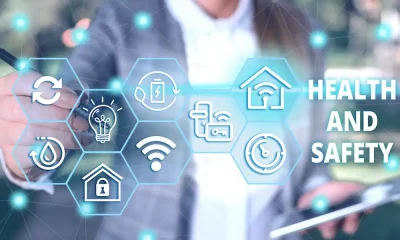Technology
Hospitality POS System To Manage Your Restaurant

Technology has made travelling cheaper, and it’s caused a paradigm shift in the hospitality sector, i.e. cafes, restaurants, eateries and bars.
Travel, accommodation and eating out now costs less than it used to and technology has driven this result. For example, the technology disrupter, Airbnb has changed the way we book and use the accommodation.
The review process of Airbnb’s technology has given travellers and tourists confidence to stay in private residences in much the same way they’d stay at a hotel. Therefore enterprising homeowners everywhere use Airbnb to rent out their spare room or studio for short stays and travellers keen to pay less for accommodation use Airbnb especially when visiting less populated remote destinations.
With travel more affordable there is more demand and supply of accommodation and eateries. With an increase in competition for customers, owners of restaurants, cafes, bars have invested in technology, namely a hospitality POS system to help them drive efficiency in operations, improve sales and profit.
POS systems are now an integral part of hospitality businesses, and as a customer, you’ve probably witnessed them in use from the moment you sit at a table, and a waiter takes your order. So what’s all the fuss about?
POS Systems In Hospitality
POS systems capture a lot of data from the first touchpoint and data capture starts when the waiter takes the order at the table, and it continues through to the sale, i.e. when the bill is paid.
There is no end in sight on what data can be collected and businesses need to strive for greater insight into our preferences and wants so they can satisfy them. However, collecting customer data is a balancing act insofar as it needs to be done quickly and efficiently without creating a negative ‘dining’ experience.
POS Data Capture
The POS system makes collecting data from dining customers seamless. Customers are used to the staff asking a couple of questions when they take their order, so this can be achieved and entered into the POS system on the mobile device at the table. When this action is discrete, i.e. doesn’t impact on the dining experience, there’s also the opportunity to capture more detail on customer preferences throughout the meal.
Plus asking the customer to follow your facebook page or share an image of their dining experience on Instagram or Twitter is the norm now we all have smartphones, and we’re not shy about using them at the table.
Also captured during the customer visit will be the time of arrival and departure, duration of the visit, and the time taken from the order to the food delivered to the customer. Plus your POS system will know what was ordered, the volume of produce (food and beverages) needed for the dining experience, and who was involved in the process, i.e. front of house, bar and kitchen staff.
How Is POS Data Useful?
POS Integrations
Integrating technology is a gamechanger as all businesses use specialist software for the various areas of business like accounting, sales, HR, warehousing, and so on. With POS integrations in the hospitality sector system data is synced with the restaurant owner’s external software systems like the payment gateway and accounting software.
Accounting
Capturing data from the POS system can be used in accounting software for sales and other financial reporting, managing payroll, and bookkeeping.
Inventory
Poor inventory management results in overspending and wastage as well as cutting into profit so it can make or break a restaurant. You want as much information as you can get your hands on to track orders, expiries, usage and forecast requirements.
Staff Management
Understanding staffing requirements is easier too, as the data collected by the POS system can inform peak and off-peak periods of business. Restaurant management can manage staff schedules to meet workloads, so the business operates at an optimum level at all times.
Customer data is powerful in marketing. All restaurants need to use digital marketing to retain business and attract more customers.
Marketing
The data captured from the POS system can be integrated with your marketing app. Client information including email addresses and other personalized data including their food or drink preferences can be used in digital marketing strategies including email marketing.
Growing your presence on social media is easier when your customers follow your profiles and sharing content on social media sites to drive interest in a new menu, or special meal offer is easier when you analyse the client data in your POS system.
Summary
With POS integrations hospitality businesses are empowered to work more on the business. Using their favourite external software systems like payment gateways and accounting software, they also reap the rewards of data accuracy to provide better reporting and customer service.
It’s fair to say, the POS system and POS integrations have been a gamechanger for restaurants, cafes and bars. Smaller operators are empowered to compete for custom alongside the more substantial businesses with this technology in their management toolkit.






